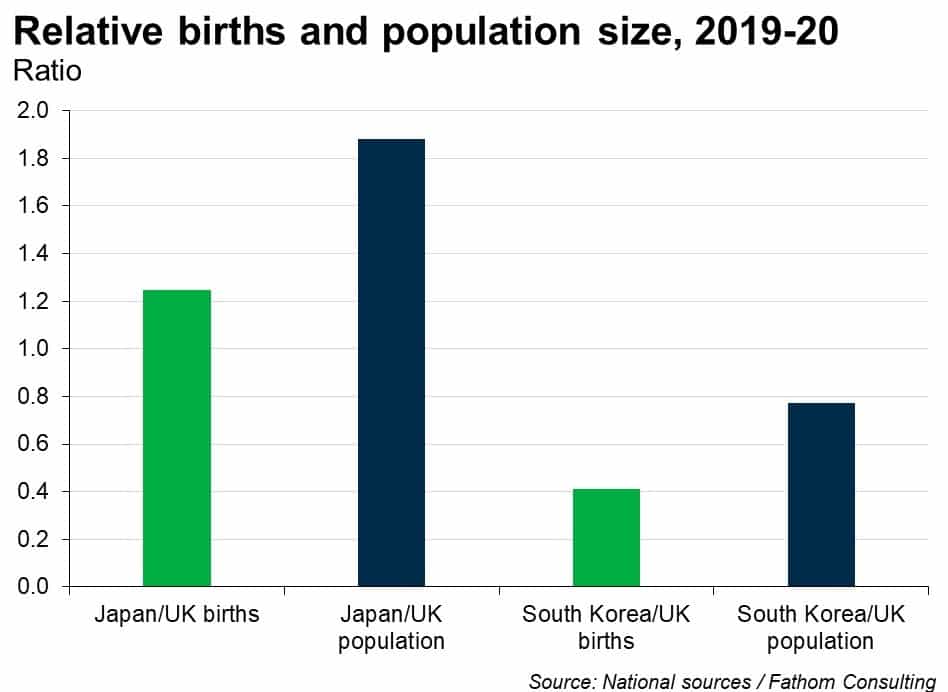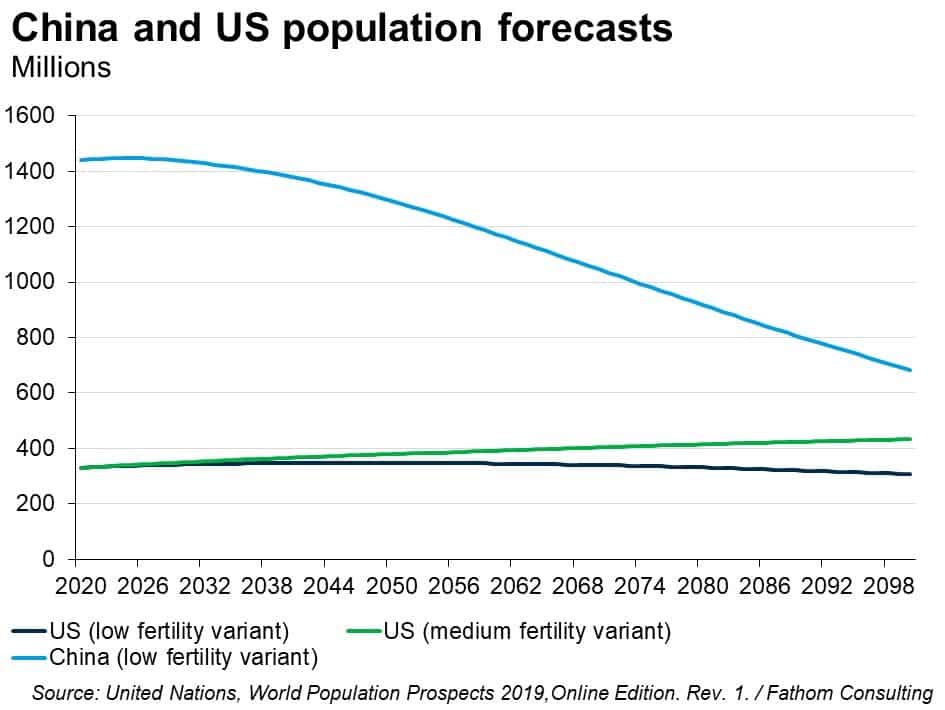A sideways look at economics
Ever since I was a young child looking through my atlas, I’ve been fascinated by the different countries of the world, their capital cities, the size of their populations, and the different commodities they produce. I vaguely recollect the US population being around 220 million in those far-flung days, which gives readers a clue to my age! I am eternally grateful to my parents for taking me on foreign holidays which piqued my interest in other countries and cultures, although my red hair meant there was nothing they could do to help me return home with a nice suntan! Over time, my interest in demography has expanded to US states, Chinese provinces and various cities across the globe – it’s been good to read about other countries even if it’s not been possible to do much travelling recently.
While working as a China economist at Fathom, I have become increasingly fascinated by global demographic trends, particularly in the important East-Asian countries such as China, Japan and South Korea — three of Asia’s four largest economies.[1] The headline story of ageing populations amid low birth rates is not particularly new in these countries and it is generally accepted that their populations will decline somewhat over time. However, as their birth rates continue to fall, I have been pondering what it could potentially mean for the future size of their populations relative to certain western countries.
Economists and demographers look at average fertility rates in countries, with 2.1 babies typically considered the replacement rate at which a population would remain basically unchanged (assuming no migration). Countries such as Japan and South Korea and much of southern and eastern Europe are typically south of 1.5 to varying degrees, with countries such as the UK, France and the US typically somewhere in the 1.5-2 region. China increasingly looks as though it may have moved into the Japan and South Korea category in recent years.
However, it wasn’t until I compared the actual number of babies born in some of these Asian countries with some of their medium-sized peers in developed economies, that it hit home to me the potential scale of future relative population shifts if such trends hold. As the chart below shows, only around 25% more babies are born in Japan than in the UK despite Japan having a population that is almost double that of the UK. South Korean births are only 40% of those in the UK despite having a population around four-fifths as large. The comparisons were similarly stark when France and Canada were used as comparators. Moreover, this doesn’t take account of the fact that, if history is anything to go by, countries such as the UK, France, and Canada will continue to see their populations boosted significantly by immigration.

Meanwhile, China appears to be following in the footsteps of its East Asian peers with a dramatic fall in births in recent years. According to China’s National Bureau of Statistics, Chinese births fell from around 17.9 million in 2016 to 14.7 million in 2019 and just 12 million in 2020, and the fertility rate has reached 1.3 (some observers also argue that the birth numbers are overstated). The number of births in 2020 was the lowest since 1961 when the population was less than half its current size! Early evidence suggests that births may have plunged further in 2021. The province of Anhui,[2] the first to provide an estimate, recently suggested that births will fall by almost 20% this year, while the capital city of Guizhou province reported a decline in births of around 12% in the first eight months of 2021.[3]
A fertility rate remaining around 2020’s 1.3 would put China broadly in line with the UN’s ‘low fertility variant’ forecast which would see its population halve by the end of the century.[4] Japan’s fertility rate has not moved much below 1.3, but South Korea’s has fallen materially further to just 0.84 in 2020. A shift towards the latter would expedite China’s population decline. The increasingly gloomy prognosis and the 2020 census numbers appear to have caused significant alarm among the authorities, resulting in a slew of new policy measures. Recent evidence suggests they may struggle to reverse these trends and a big rise in immigration seems very unlikely. At some point this century, we may be living in a world where there is around one American for every two people in China – not four as at present (see chart below).[5]

Looking ahead, China’s economic ascent increasingly appears at risk as the authorities try to rein in the all-important housing market and as rising state intervention threatens to stymie private sector innovation. Given its role as Asia’s economic locomotive, this will clearly have large knock-on effects elsewhere. At the same time, the massive demographic advantage of the key East Asian countries looks set to shrink compared to some of their main competitors in the West. A lower fertility rate means a smaller labour force in the future, which, alongside productivity, is one of the main drivers of long-run growth. All in all, those heralding the ‘Asian century’ may want to put the champagne on ice for the time being. I intend to hunker down in my flat for a more comprehensive analysis of these fascinating trends over the winter evenings and weekends!
[1] When measured at market exchange rates.
[2] Representing around 4.5% of China’s population.
[3] China population: plummeting births in Anhui province underscore ‘extremely severe’ demographic problem | South China Morning Post (scmp.com)
[4] China’s new population numbers won’t doom its growth | East Asia Forum
[5] For more on China’s demographics see: Round up: China in a global context